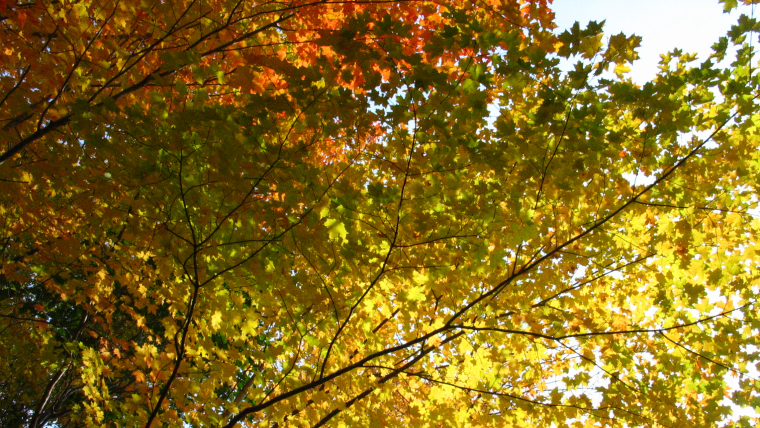
In a nutshell
In the scientific community, there has thus far been no clear agreement on whether autumn phenology events such as leaf color are more influenced by day length or temperature in temperate systems. The authors found that both have an influence, and leaf coloration happens when it has been cold enough for a long enough period of time to cue the trees to shut off the exchange of water and protein between the leaf and the tree. This shut-off ends the production of chlorophyll (which gives green color to the leaves), and protects the tree by preventing damage caused when water inside the leaf freezes.
The authors used 177 Nature’s Notebook sites across the country to validate their models of leaf coloring, which included observations on 6 species of deciduous trees. The authors’ models predict that the leaf coloring date of white birch (Betula papyrifera) at the end of this century will be 7-20 days later than it is now. The shift to later fall color change that has been observed in recent years is linked mostly to increases in late summer and early autumn temperatures. Over the next 100 years, climate change will likely continue to delay the timing of leaf coloration. Warmer regions were found to have a larger sensitivity to temperature than colder regions, so people in the Northeast will likely see greater change in the timing of leaf coloration than those in Alaska.
What is special about this study?
By using many sites over a wide geographic area, the authors were able to calibrate phenology models to make predictions of deciduous forest phenology and the underlying climate drivers for variations. Past studies of autumn leaf phenology used observations from a small number of sites, which makes it difficult to make predictions on a larger continental scale. Because Nature’s Notebook observers collect data across the country, the authors were able to use data from a broad geographic area.
What does this mean for YOU?
These predicted changes of warmer summer and autumn temperatures and a later start to fall leaf color means a longer growing season, and therefore a shorter winter season. This has negative implications for plants that need a dormant period prior to spring growth. Also, “leaf peeping” season, when people travel to observe beautiful fall foliage, might not only be longer, but could also be shifted to later in the year. If the season shifts too late, this could affect the tourism dollars local communities depend on. Aside from the effects on leaf peeper tourism, these findings also have implications for carbon storage, ecosystem structure and composition, and ecosystem services such as fruit production.
Citation: Jeong, S.-J., D. Medvigy. 2014. Macroscale prediction of autumn leaf coloration throughout the continental United States. Global Ecology and Biogeography 1-10.
Read more in an article by Princeton University's Environmental Institute.